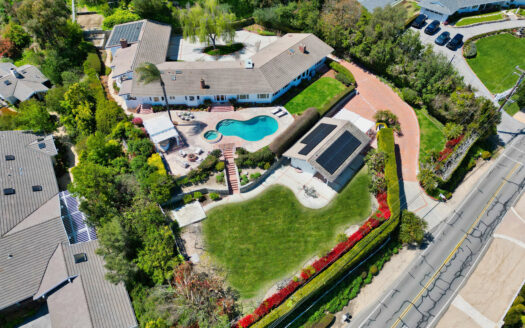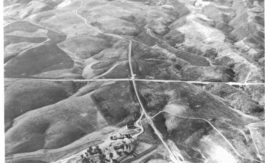Martin Byhower has trekked across Chadwick School’s Palos Verdes Peninsula campus for 30 years. Fossils scattered across the hilltop grounds often caught the eye of the seventh-grade life sciences teacher.
Two years ago, he spotted one that particularly interested him. And on Wednesday, staff from the Natural History Museum excavated it and carefully loaded it onto the bed of a truck. Soon, researchers will begin cleaning it to learn more.
This much is known: It appears to be the skull of a rare juvenile sperm whale, and it is 12 to 15 million years old.
Byhower contacted different groups to ask them to identify the fossil; he got a response from the county museum.
“I realized they [fossils] were kind of sitting around, and I didn’t know if they would get moved or damaged,” Byhower said. “I thought it would be a good idea to see if they were of any scientific interest.”
Howell Thomas, a senior paleontological preparator at the Natural History Museum of Los Angeles County, visited the school in October 2012 and immediately was taken with the fossil.
“I said, ‘This one is important,'” Thomas recalled, noting that the fossil itself could be a new species or genus for one of Earth’s largest predator marine mammals. Within seconds of looking at the fossil, he identified the rear of the skull, blow holes and the location of the snout.
It could take nearly a year before the fossilized sperm whale skull is fully revealed.
Seeing the fossil on campus was proof, particularly to students, that Palos Verdes rested at the bottom of the ocean before shifting tectonic plates created its hilly landscape, Byhower said.
Tenth-grade student Madeleine Kerr-George, 16, watched between classes for the fossil’s move. She said thinking of Palos Verdes as the ocean’s bottom reminded her about the importance of the past.
“Then, we can understand where we come from,” she said. “This has sparked my interest in the [Miocene] time period.”
Thomas said the fossil was an especially lucky find because sperm whales spend only a short time of their lives as juveniles. Altamira shale had formed around the fossil, Thomas said, aiding its preservation over the years.
“You have those two things working against you,” Thomas said. “The chances of it [a juvenile sperm whale] dying and fossilizing is a small percentage, and their bones are less formed.”
Chadwick Headmaster Ted Hill said the discovery should remind students that Palos Verdes hasn’t always overlooked the Los Angeles Basin. The school plans to maintain contact with the museum throughout the year to keep tabs on the progress of the fossil.
“The biggest benefit is for us to see science in action and to realize education is about creating new knowledge, taking what we’ve already learned in the past and applying it in new ways,” Hill said.
Once the fossil is cleaned, the museum plans to provide Chadwick with a model of the skull. If it’s determined to be a new species or genus, the find could bear the name “chadwickii” in honor of the campus.
The excavation came as Byhower is preparing his next course, coincidentally on animal diversity, including how mammals fit into their environment, evolution and adaptations.
For Thomas, the fossil serves as a reminder that not all animals, past and present, have been discovered. School officials and staff hope students will be more observant of their surroundings even during short walks to and from class.
Thirteen-year-old Sam Peri is an eighth-grade student who has attended Chadwick for three years. He noticed the now-treasured fossil, but never gave it a second glance.
“Honestly, I thought it was just a piece of rock,” Sam admitted with a bashful smile.
Thomas drove slowly down the school’s main winding road with the fossil secured to a wooden slab. Sam looked on, talking among friends who rushed outside for one last look.
“My perception has changed about the whole world. You could be putting a pool in your backyard and find a fossil,” Sam said. “We lost a big part of Chadwick, but for the greater good.”








